How to Write a Strategic Marketing Plan (With Free Templates)

Businesses come in two forms: companies starting with a marketing plan and companies that languish without growth or progress for months or years.
A strategic marketing plan is a decisive, detailed document encompassing a plan to grow the business over time. It might sound like a lot of work, but it's necessary to build a brand.
After all, you wouldn't set out to climb a mountain with nothing but a walking stick, and you wouldn't try to play golf without knowing how to swing a club, so why would you run a business without knowing where to take it?
 30 Second Summary
30 Second Summary
You need two important items to succeed in business: goals and a way to reach them. You have to set SMART goals (specific, measurable, actionable, relevant time-bound) and pick the right marketing channels to reach your target audience. Your marketing channels will fall into four groups: paid (like Google/Facebook ads), social (organic posting), content (blogs, videos, emails), and partnerships (guest posts affiliates). You should start with 3-4 channels where your audience spends time, then expand once you've mastered those.
What Goes into a Strategic Marketing Plan?
A strategic marketing plan is three things.
1. First, it's a set of business goals. These are SMART goals, meaning they're specific, measurable, actionable, relevant, and time-bound. I go into greater detail on setting clear goals in this post, so I won't dig deep into it here.
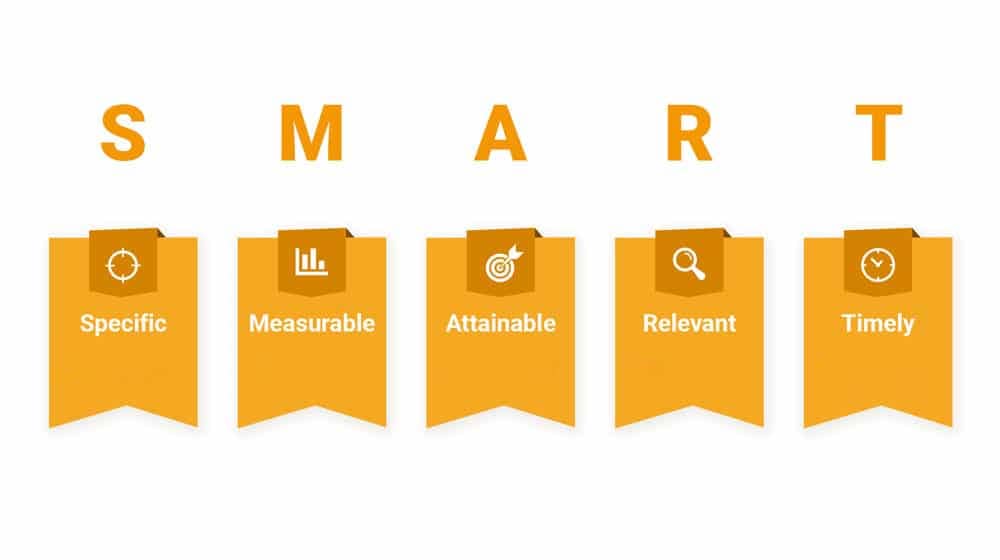
Imagine you're planning to drive from Los Angeles to New York City. You have a starting point and an ultimate destination, but you still need to know what route to take and where to stop along the way. Your business objectives are your destination and the stops you make along the way.
2. Second, your strategic marketing plan is your method. This is how you're going to get to your goals. I will spend the bulk of this post talking about it, so read on to learn more. Mostly, it's about itemizing your digital marketing channels, identifying how you plan to use them, and figuring out how they all work together to improve your overall business synergistically.

3. Third, your strategic marketing plan is the KPIs you use to reinforce the first two parts. It's the metrics you identify that form your key performance indicators, and it's how you measure them. How do you know what success means?

Your goals help you define what metrics to track and what levels they should reach using the channels you define in your plan. It all works together.
Channels and Methods in a Strategic Marketing Plan
As a core part of your strategic marketing strategy, you need to outline the marketing channels you plan to use and how you plan to use them.
Setting your goals here is essential because it helps you identify your target audience. Once you know your target market, you can pinpoint where that audience exists and how you can reach them across various channels.
It doesn't do you any good to advertise on TikTok if none of your potential customers use the app, right?
You can generally divide your marketing channels into specific groups and categories. Each of these categories is broken down into particular channels, and each channel includes what you need to do using that channel, how to do it, and how often you'll be doing it, along with any other relevant information.
1. Paid Marketing Channels
Technically, all marketing activities are paid marketing. You decide between paying with your time or paying with your money.
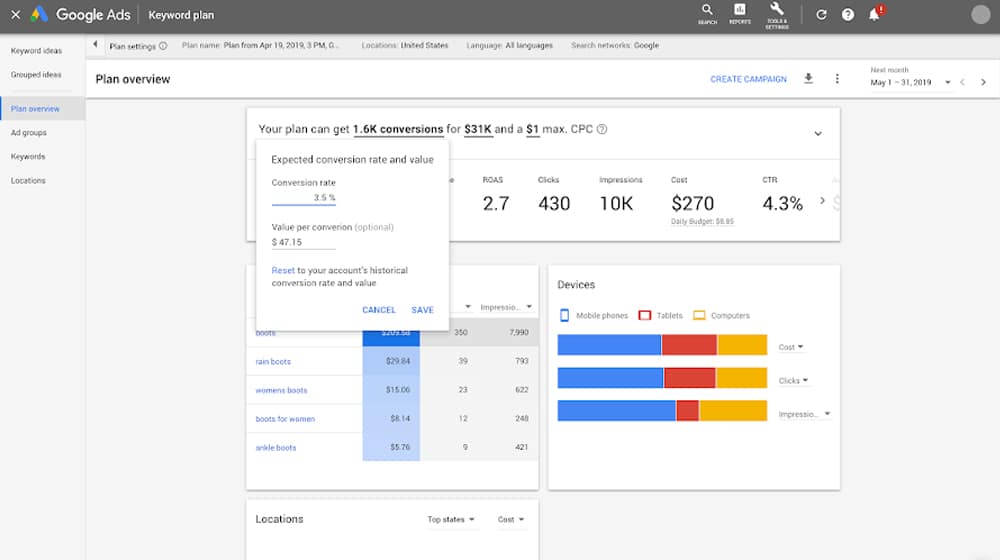
For this section, though, think about the channels you use by fueling them with money.
- Google search ads.
- Google display ads.
- Facebook display ads.
- Facebook boosted posts.
- Twitter boosted tweets.
- YouTube video ads.
- Twitch video ads.
- Ads on other social networks.
- Ads on non-social advertising platforms.
Paid marketing is generally where a large portion of your marketing budget is going to go, so you need to be able to spend extra time on these. It would be best if you were careful with picking the KPIs you measure as well.
There are a ton of social networks out there, and they're all free to sign up, post organically, and interact with your community.
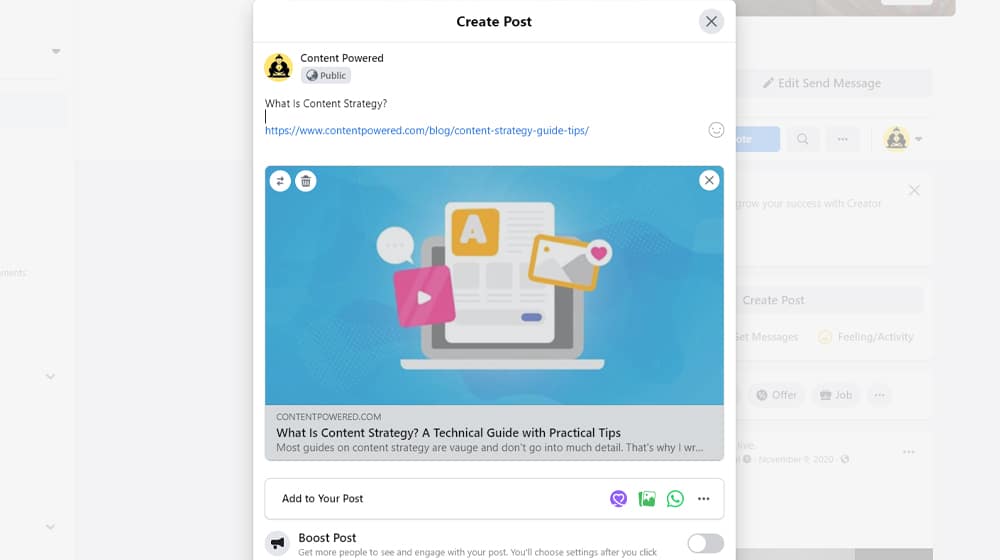
Consider:
- Facebook, organic feeds, business pages, groups, and events.
- YouTube, both for longer videos and for shorts.
- Instagram, primarily for photos and videos.
- TikTok, for that added dose of micro-video marketing.
- Twitter, which is still one of the best customer service networks despite imploding.
- Reddit, which ties in with content marketing and social marketing.
- Tumblr is experiencing a resurgence due to the aforementioned Twitter implosion.
- LinkedIn, which can still be used for marketing in specific markets.
- Pinterest, another heavily visual network specializing in certain markets.
- WhatsApp is one of the most extensive non-US-centric networks.
This selection is a very US-centric list, and it still just scratches the surface. But this is critical: you don't need to pick all of them.
In fact, the more you try to do at once, the less likely you are to pull off any of them effectively.
I recommend picking at most 3-4 of the networks most heavily used by your target audience and starting there. Once you've established patterns, habits, demographics, content pipelines, and practical strategies on those networks, you can expand into others for added reach.
3. Content Marketing Channels
Content marketing is the foundation of other kinds of marketing because all effective marketing relies, to some extent, on the content you produce. But, more than just "the content of the ads you run," content marketing requires you to create long-form blog posts, eBooks, videos, podcasts, and other media, to post for free on your website and around the web.
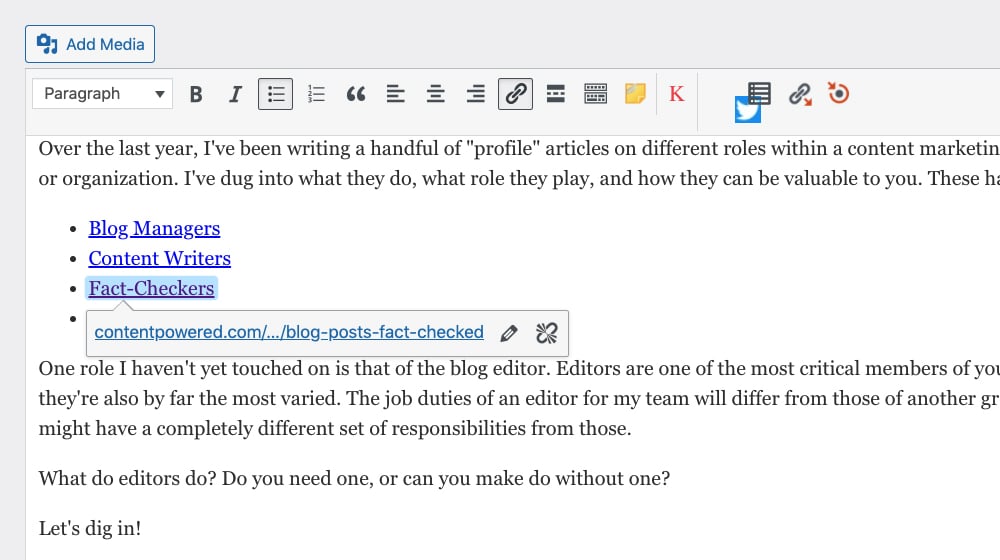
Content marketing requires a keen knowledge of SEO and how Google's search engine algorithms work. Your content plan also requires investment in content production, which often means hiring teams or gathering freelancers to do the work.
That's paid work, of course.
Content marketing can also include your email marketing channels as well. You write content for your blog and share it across the web on social media.
You gather sign-ups for your newsletter and spread your news and content links in those regular email digests.
This also overlaps with paid marketing in the form of sponsored content, where you pay for your content to be published on other sites, often those with more exposure to your niche than you would have on your own.
4. Partnership Marketing Channels
Partnership marketing can include marketing channels where you create the content and marketing channels where you don't.
Channels, where you create the content, include things like guest posting. Guest posting is your content published on other sites because of a partnership or agreement you make with those other sites. Of course, if you pay money for it, it goes right back up into paid advertising. See how it all muddles together?
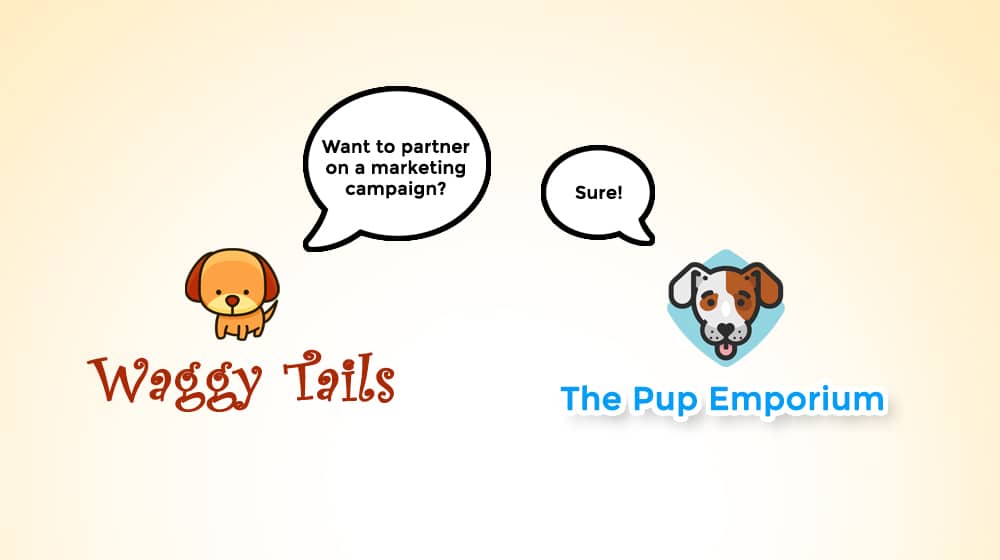
On the other hand, channels where you don't create the content include things like:
- Affiliate marketing, where you offer monetized links to anyone who is a content creator and wants to promote your content through their preexisting channels.
- Referral marketing, where you allow your customers to earn rewards, points, or money for promoting you to others they know.
- White label reselling, where you offer a version of your product with the serial numbers filed off for someone else to slap their brand sticker on and sell on their own, with you getting a cut.
Which (if any of these) are effective for you depends on your business, your audience, and your marketing plan. Your analysis of the niche and industry will help you determine whether or not it's worth pursuing any of them.
5. Putting It All Together
As you can see, there's a significant amount of overlap between all of these channels.
Every channel can work, but they all work better together than they do apart. Small businesses that try to create "the social media team," "the blog team," and "the SEO team" are generally doomed to have disjointed marketing and inconsistent content. Instead, you need teams that work together as one whole, overarching marketing team.
Experimentation is key.
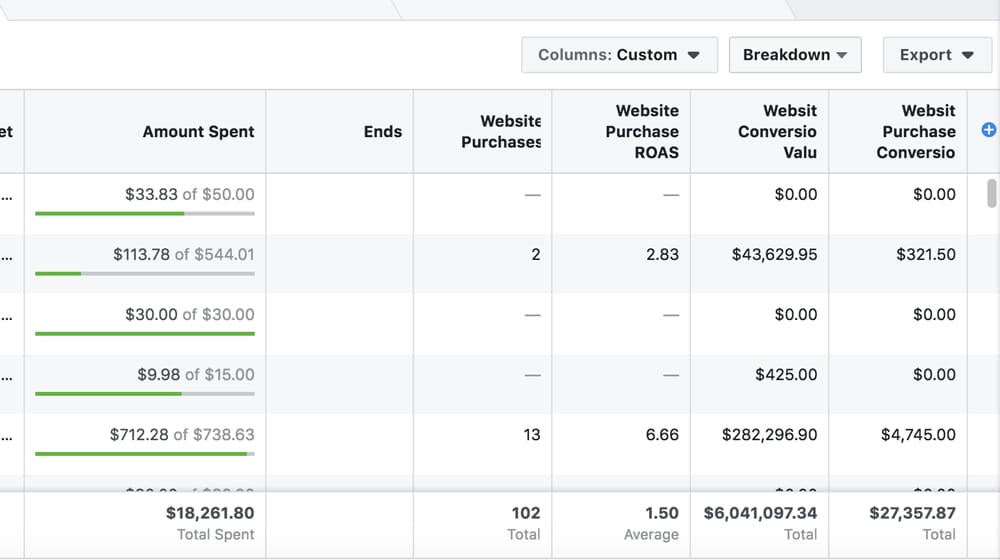
Part of your strategic marketing plan should be identifying which channels are most important and focusing on them first and foremost. Then, develop a roadmap of which channels to expand into (and when) when those metrics reach specific milestones. There's always going to be some flexibility here, but you need to be able to handle what's on your plate before you take on more.
Other Elements of a Strategic Marketing Plan
Of course, plenty goes into a strategic marketing strategy that isn't part of the marketing channels section.
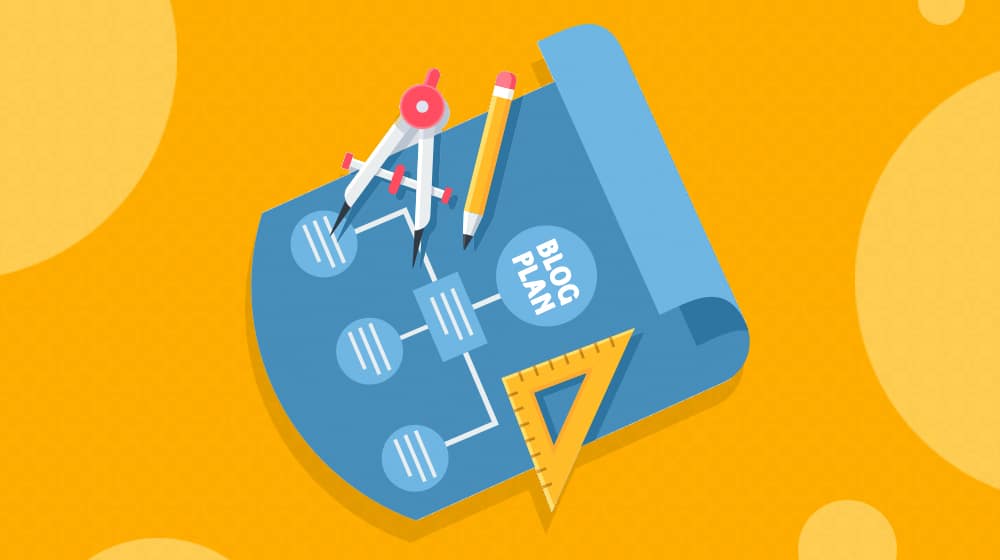
Let's run down what else you need.
- Goals. I already mentioned this above, so head over to this link to learn more about setting marketing goals for your business.
- A SWOT analysis. SWOT is a two-part, two-axis analysis of the Strengths and Weaknesses of your brand and the Opportunities and Threats of your position in the industry. Knowing these helps you identify where you can leverage your marketing efforts for the best effect and what you need to do to defend yourself against the competition edging in on your territory.
- Executive Summary, Mission Statement, Values, and Vision. This is all high-level introductory content, meant not necessarily for you but for the people in your management team who work with you to implement the strategic marketing strategy. It's a bird's-eye level overview of what your company is, what you're trying to do, and the driving forces behind you.
- Market Analysis. A specific itemized list of competitors, new and old. This can tie in with your SWOT analysis, or it can be its own set of information. You want some level of awareness of what the competition is doing and who they are, kept in one place for easy reference later.
- Audience Information and Buyer Personas. This is information about who your audience is, who your ideal customers are, where to find them, what they like, what they dislike, and the value of reaching them. It's all very standard stuff for marketing, and I've written extensively on the subject.
- Budgets. Money makes the world go-'round, and that's more true than ever in the realm of marketing. Whether you're bootstrapping yourself with growth hacks or you're leveraging venture funding to saturate a market, you have a finite amount of money, and you need to know where to spend it for the best effect.
All of this is put together into one comprehensive living document that grows, changes and is edited as information in it needs to change.
How to Set Your Marketing Budget
Budgeting your plan is an essential part of making sure that your plan is successful.
The most popular business promotion strategies are organic marketing, advertising, and partnerships.
Each has its unique advantages and disadvantages. Organic marketing is a cost-effective way to increase brand awareness and reach new customers. Advertising can be a powerful tool for reaching specific audiences and creating urgency around products or services. Partnerships leverage each other's networks and resources to promote both brands.

Let's break these down in more detail to help you determine your budget for each:
- Organic marketing is a great way to build trust with potential customers by providing helpful content while creating an organic search presence. Organic marketing involves content creation, social media, search engine optimization (SEO), and influencer marketing. These activities build relationships with customers and leads without requiring additional investments in advertising or partners. Organic marketing takes time and effort but can pay off in the long run. For this reason, I wouldn't recommend that newly established companies invest all of their marketing dollars into organic marketing strategies. Some of these don't pay off for months or years, and it's important to start building traction in parallel with some of the other marketing methods.
- Advertising is a more targeted approach that helps businesses reach their target audiences quickly and more effectively than organic marketing. You can focus ad campaigns on specific demographics, regions, interests, or products. With this type of campaign, businesses can ensure their message reaches the right people at the right time. It's essential to track the effectiveness of your ad campaigns to ensure that you're getting the most out of your budget. Ads are effective at generating sales immediately, and you'll know pretty quickly if they aren't working. I think it's a good idea to invest in ads and slowly taper off by investing into other organic marketing strategies as your company grows.
- Partnerships involve two companies working together to promote each other's brands, whether affiliate, referral, whitelabel, collaborations, private label, and so on. These collaborations are great for leveraging each other's networks and resources to gain exposure to new customers and drive traffic. This strategy can benefit both companies if they target similar audiences and have complementary products or services. However, it's necessary to ensure that both parties get something out of the partnership to remain mutually beneficial.
Organic marketing, advertising, and partnerships are all valuable tools for any business. Each has its benefits, but finding the right balance between them is necessary when developing your marketing strategy. The combination will depend on your target market, budget, and goals. Ultimately, maximizing your return on investment (ROI) is the goal.
Strategic Marketing Plan Templates and Examples
It's one thing to give you a bunch of theories and tell you to have fun, but it's another to give you tangible examples of what you can put together.
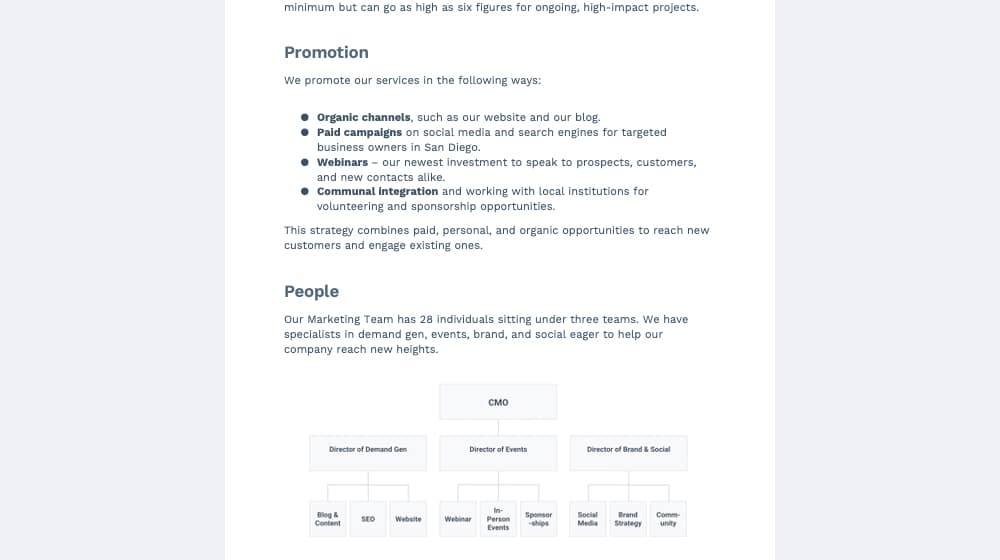
Here are a bunch of examples and marketing plan templates from around the web.
- Ten Templates from Visme.co. This post, in addition to running down through all the elements of a strategic marketing plan, also includes ten templates you can use to get started. The templates are based on a core concept, like the kind of business (restaurant, real estate) or the kind of marketing (content, social), but they can give you a great idea of what you should be putting together for yourself.
- A Plan and Template from Vital. There's only one template here, but it's one of the more comprehensive examples I've seen, and the article that accompanies it is fantastic.
- Mayple's Marketing Plan Spreadsheet. This is a great example of how you don't actually need all of the wild graphical design and typography that some of these plans use in their templates. It's fine to work on that aspect, but making your plan look good doesn't have nearly as much of a tangible benefit as making it function properly.
- HubSpot's Templates. It's HubSpot. If you don't already trust their expertise, I don't know what to tell you. Their templates range from basic to advanced, so there's something in there for everyone, though you may have to find related posts to dig into deeper templates and guidelines for some of the strategies they mention.
Do you have a favorite example or template of a strategic marketing strategy you've used? Have you put together something you're proud of or consider impressive? Feel free to let me know; I'd love to see it!



 30 Second Summary
30 Second Summary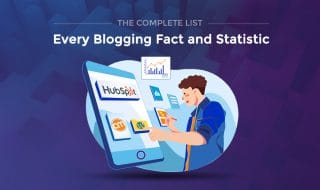
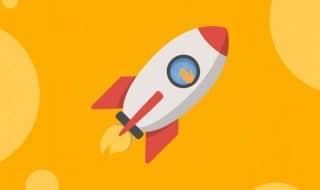


Comments